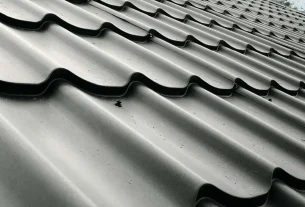Picture this: a city where rooftops aren’t just slabs of concrete but thriving mini-ecosystems. Birds chirping, bees buzzing, and plants swaying in the breeze—all atop buildings. That’s the magic of green roofing systems. And honestly? They’re not just pretty. They’re a game-changer for urban biodiversity.
What Exactly Is a Green Roof?
Let’s break it down. A green roof—sometimes called a living roof—is a roof partially or completely covered with vegetation. It’s not just tossing some soil and seeds up there, though. These systems are engineered with layers for drainage, root barriers, and waterproofing. Think of it like a lasagna, but for plants.
Types of Green Roofs
Not all green roofs are created equal. Here’s the deal:
- Extensive Green Roofs: Lightweight, low-maintenance, and shallow soil (usually 2-6 inches). Perfect for hardy plants like sedums and mosses.
- Intensive Green Roofs: Deeper soil (6+ inches), supporting shrubs, trees, and even small gardens. These are like rooftop parks—stunning but heavier and pricier.
- Semi-Intensive: A mix of both. Best of both worlds, really.
Why Green Roofs Boost Urban Biodiversity
Cities are tough places for wildlife. Concrete jungles leave little room for nature. But green roofs? They’re like pit stops for biodiversity. Here’s how:
1. Habitat Creation
Birds, bees, butterflies—they all need homes. Green roofs provide shelter and nesting spots, especially in areas where green space is scarce. In fact, a study in London found that green roofs hosted over 50 species of bees. Not bad for a rooftop, huh?
2. Pollinator Highways
Imagine rooftops as stepping stones for pollinators. By linking green roofs across a city, we create corridors that help bees and butterflies move safely. It’s like building a subway system—but for bugs.
3. Cooling the Urban Heat Island Effect
Cities are heat traps. All that concrete absorbs and radiates heat, making urban areas way hotter than surrounding countryside. Green roofs, though? They absorb less heat and even cool the air through evaporation. It’s like giving your building a sunhat.
The Environmental Perks (Beyond Biodiversity)
Sure, green roofs help wildlife. But they’re also multitaskers. Here’s what else they bring to the table:
- Stormwater Management: They absorb rainwater, reducing runoff and flooding. A single green roof can retain 50-90% of rainfall.
- Air Quality Improvement: Plants filter pollutants and capture dust. Cleaner air, just like that.
- Energy Savings: They insulate buildings, cutting heating and cooling costs. Your wallet—and the planet—will thank you.
Challenges? Sure, But Not Dealbreakers
Look, green roofs aren’t perfect. They’ve got hurdles—cost, maintenance, structural requirements. But here’s the thing: cities like Toronto, Copenhagen, and Singapore are making them work. Policies, incentives, and smart design are paving the way.
How to Get Started with a Green Roof
Thinking about going green? Here’s a quick roadmap:
- Assess Your Roof: Is it strong enough? Flat or sloped? Sun exposure? These factors matter.
- Pick Your Plants: Native species are best—they’re adapted to your climate and support local wildlife.
- Work with Pros: Engineers, landscapers, and ecologists can help avoid pitfalls.
- Maintain It: Even low-maintenance roofs need some love. Weeding, irrigation checks—basic stuff.
The Future Looks Green
As cities grow, so does the need for smart, sustainable solutions. Green roofs aren’t just a trend—they’re a shift in how we think about urban spaces. And honestly? The more we embrace them, the richer (and wilder) our cities become.
So next time you look up at a rooftop, imagine what could be. A patch of green, a flutter of wings, a breath of fresh air—right above the hustle and bustle.




